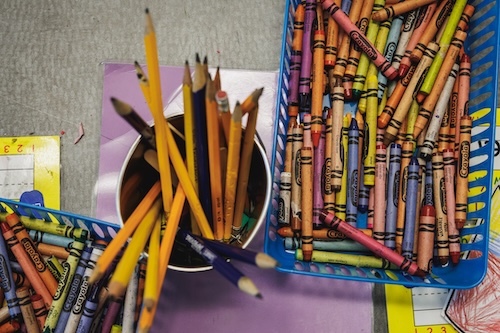
At NWEA, our policy and advocacy team, in collaboration with our state and government partnerships team, is committed to educating policymakers around assessment issues to help strengthen the connection between policymaking and practice. State legislators have significant power and opportunity when selecting assessments and setting assessment policy. And while heated political conversations around assessments have simmered down since 2016 (which saw 75 assessment-related bills enacted into law across 30 states), the last few years have still seen heavy interest and action around innovating, streamlining, and aligning assessments at the state and district level to better serve students and educators. This sort of activity has—and will continue to have—major implications.
Educational assessments are used to both support learning as well as validate it.”
So, why do we assess? And what are the different types of assessments? While these may seem like basic questions to some, the high turnover in state legislatures (typically 19–20%) often challenges new policymakers to become experts on the complicated topic of assessment in short order. In order to assist with this transition, NWEA hosted a webinar in partnership with the National Conference of State Legislatures to provide an overview of what state policymakers should know about the basics of assessments. Here’s what we dug into.
Why we assess
This is the ultimate question for policymakers, parents, teachers, and students alike. Simply put, educational assessments are used to both support learning as well as validate it. However, the purpose of an assessment truly varies by stakeholder, as outlined below:

Source: Understanding and using reading assessment, K–12
The high turnover in state legislatures (typically 19–20%) often challenges new policymakers to become experts on the complicated topic of assessment in short order.”
Purpose drives design—or selection—of assessments
Assessments are designed, or selected, to serve different purposes within an education system. To act—and be more informed—we need to know the intended purpose of various assessment types.
Anyone who has attended or has a child enrolled in public school is familiar with summative assessments. Commonly referred to as “high-stakes testing,” these assessments are typically used for state and federal accountability and, frankly, attract the most frequent political attention.
However, there are many other types of assessments that seek to answer differing questions about student learning. It is important for both policymakers and practitioners to recognize that every type of assessment has its strengths and limitations; considering purpose or goal of testing helps ensure an assessment is a good fit. Here’s a simplified breakdown of assessment types and purpose:

Innovation in assessment
The landscape and expectations of summative assessments have changed dramatically since No Child Left Behind:

The Every Student Succeeds Act (ESSA), the reauthorization of the Elementary and Secondary Education Act (ESEA) signed into law in December 2015, preserved the requirement for annual assessments but gave states new opportunities to audit, streamline, and innovate their assessment systems. This opened the door for states to address persistent issues with assessment.
ESSA also created the Innovative Assessment and Accountability Demonstration Authority (IADA; commonly referred to as the Innovative Assessment Pilot), which allows the secretary of education to authorize a pilot for up to seven states to experiment with new, innovative assessment and accountability systems. So far, the Department of Education has approved four states to participate in the pilot: Louisiana, New Hampshire, North Carolina, and Georgia.
NWEA is excited to have the opportunity to work closely with both Georgia and Louisiana on their respective assessment pilots and to help usher in this new wave of innovation. To learn more about these pilots, view “Using innovative assessments to promote education equity and testing efficiency.” And for more information on the evolution of assessment, read “The new testing landscape: State assessments under ESSA ” and “The state of assessment: A look forward on innovation in state testing systems.”
Tips for policymakers
With all of this authority over assessments, how can policymakers best make informed decisions about assessments and assessment practices? We recommend the following:
- Define the objectives you want your state to meet
- Engage with your state department of education and other assessment experts
- Explore what other states are doing so you don’t have to start from scratch
- Ask for feedback and ensure teachers have input
Kimberley Kraft, director of state and government partnerships at NWEA, co-authored this post. Kimberley joined NWEA in 2013 and leads a team dedicated to advising state-level stakeholders regarding assessment solutions. She has more than fifteen years of diversified experience serving the education and assessment industry. This experience includes working as a district administrator with Broward County Public Schools in the Fort Lauderdale area as a measurement consultant for Harcourt Assessment, and as the director of custom programs for Pearson Learning Assessments. Kimberley brings proven experience in program management, strategic planning, training and implementation, presentations, and account management.








